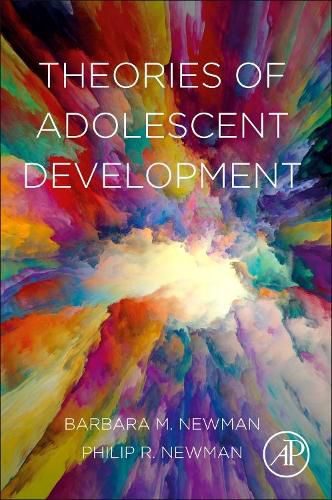Readings Newsletter
Become a Readings Member to make your shopping experience even easier.
Sign in or sign up for free!
You’re not far away from qualifying for FREE standard shipping within Australia
You’ve qualified for FREE standard shipping within Australia
The cart is loading…






Adolescence is both universal and culturally constructed, resulting in diverse views about its defining characteristics. Theories of Adolescent Development brings together many theories surrounding this life stage in one comprehensive reference. It begins with an introduction to the nature of theory in the field of adolescence including an analysis of why there are so many theories in this field. The theory chapters are grouped into three sections: biological systems, psychological systems, and societal systems. Each chapter considers a family of theories including scope, assumptions, key concepts, contributions to the study of adolescence, approaches to measurement, applications, and a discussion of strengths and limitations of this family. A concluding chapter offers an integrative analysis, identifying five assumptions drawn from the theories that are essential guides for future research and application. Three questions provide a focus for comparison and contrast: How do the theories characterize the time and timing of adolescence? What do the theories emphasize as domains that are unfolding in movement toward maturity? Building on the perspective of Positive Youth Development, how do the theories differ in their views of developmental resources and conditions that may undermine development in adolescence?
$9.00 standard shipping within Australia
FREE standard shipping within Australia for orders over $100.00
Express & International shipping calculated at checkout
Adolescence is both universal and culturally constructed, resulting in diverse views about its defining characteristics. Theories of Adolescent Development brings together many theories surrounding this life stage in one comprehensive reference. It begins with an introduction to the nature of theory in the field of adolescence including an analysis of why there are so many theories in this field. The theory chapters are grouped into three sections: biological systems, psychological systems, and societal systems. Each chapter considers a family of theories including scope, assumptions, key concepts, contributions to the study of adolescence, approaches to measurement, applications, and a discussion of strengths and limitations of this family. A concluding chapter offers an integrative analysis, identifying five assumptions drawn from the theories that are essential guides for future research and application. Three questions provide a focus for comparison and contrast: How do the theories characterize the time and timing of adolescence? What do the theories emphasize as domains that are unfolding in movement toward maturity? Building on the perspective of Positive Youth Development, how do the theories differ in their views of developmental resources and conditions that may undermine development in adolescence?